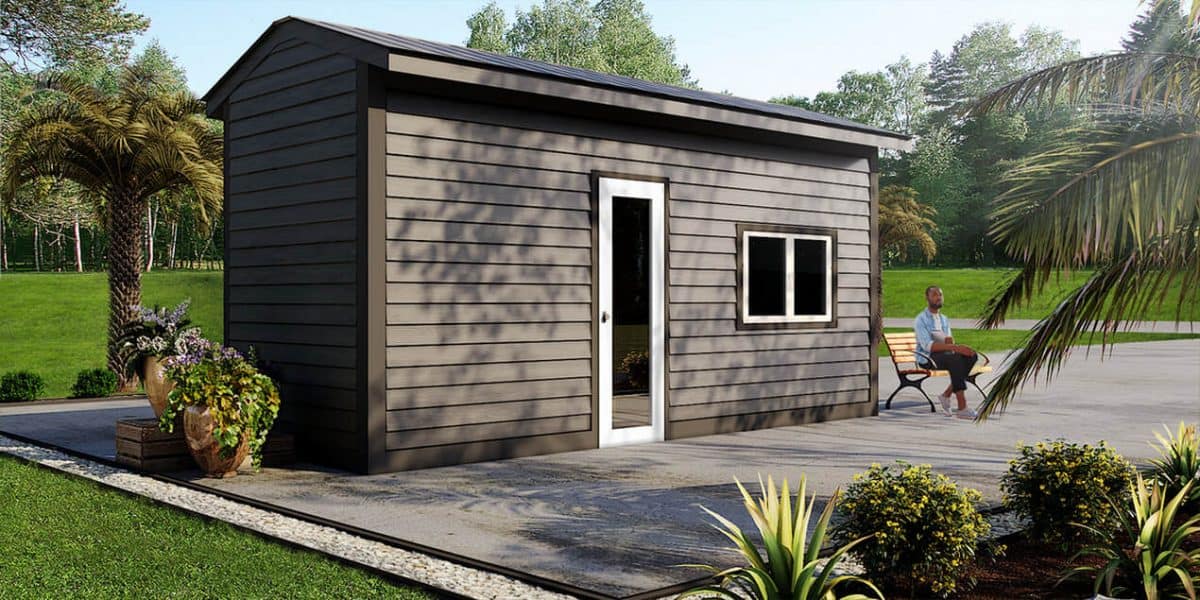During winter, tiny homeowners need to winterize their homes to ensure the smooth functioning of the plumbing system. If you are not prepared to face the extremely cold temperatures, then the pipes may freeze and burst, leading to costly repairs. You need to get insulated pipes, tanks, and water connections. During winters, even the composting toilets also fail to work properly. Winter can be tough if you don’t have fixtures and installations to handle the cold temperatures. Fiber rockwool insulation is ideal with an average R-value of 3.0 to 3.3 per inch. It is expandable, malleable and affordable. You can also opt for foam insulation. There are 3 different kinds of foam insulation available that are rigid and have different RV values. They are polyisocyanurate (R6.5), extruded polystyrene or XPS (R4.7), and expanded polystyrene or EPS (R3.6). Lastly, and the most common of all is the Fiberglass Batting (R-Value 3.14) material. This material offers good insulation and is affordable and easy to install.
However, everything is taken care of when you have an established builder manufacturing the tiny home customized specifically for your needs. Get the perfect tiny home for your backyard this winter from established builders in the USA. Connecting through TinyHouseMe helps you get multiple quotations from builders across the USA and Canada. Nevertheless, here are a few points to ensure the ambient temperatures do not freeze the pipes and water reserves.
Have all the water connections installed inside
Most tiny homes are well-insulated and have an indoor heating system to keep the temperatures warm. Having all the water connections, like hoses and drains, installed inside can keep the pipes clear. The frozen pipes affect the water temperatures and freeze the wastewater on the way out, leading to expensive repairs. The pipes and water connections installed inside the insulated tiny home are ideal for keeping the cold at bay.
Skirting of the tiny home – Stop the cold creeping through the floor
The cold can easily creep into the house through the floor if the flooring has no foundation. To prevent this, tiny homeowners need to cover the structure from the ground to the bottom to ensure the heat is locked inside. This coverage is called skirting.
The tanks and pipes of tiny homes are under the floor and are highly susceptible to freezing. Due to freezing, the water expands, causing the pipes to burst. Repairs can get expensive and take a lot of time, which means you have to go without water until it’s fixed. That’s why ask the builder to put a skirt on the base and protect the tiny home from freezing. Skirting the area keeps the cold air out and prevents the pipes from freezing. Use a material with a high R-value to effectively skirt your home.
Run hot water at regular intervals
Another great trick is to run hot water every 3 to 4 hours to prevent the water connections and pipes from getting too cold and freezing. During the day, this effective technique will prevent the water pipes from freezing. However, things are not that easy, as one cold night is enough to freeze all your pipes. Therefore, the next point is definitely worth a read.
Store the hose
If you get a campground to park the tiny home this winter, consider removing the hose at night. This technique is great for keeping the hose from freezing, and you don’t need to spend much on winterizing the plumbing system for the tiny home.
Choose heat tape and insulation on water connections
There will be external water connections if you have a tank and pump plumbing system. If you face this problem, then get the builder to insulate the water supply or do this DIY job yourself. Unhooking the water supply every night can be quite demanding, and insulation is a better choice for the long haul. All you need is a cable, heat tape, duct tape, and foam insulation. Wrap the heat tape around the pipes to prevent them from freezing. Insulation offers protection from cold and helps to stop heat loss from the heated cables. Heated hoses are great for preventing water from freezing inside the pipes. However, the only concern is that any kind of heating will put an additional load on the energy expenditure and might increase the utility bills.
Wall insulation
Most water connections and pipes run through the wall, which is why insulated walls are one of the best ways to keep the plumbing systems working smoothly during winter. Proper wall insulation comprises natural and synthetic materials, and reputable builders ensure that you get the best option for your home.
Final Thoughts – Stock up on electrical heaters this winter
The above tips can help you maintain an efficient plumbing system this winter. However, you can now make your tiny home winter ready by stocking up on electrical heaters. Unlike gas heaters, electrical systems are easier to install and maintain and need less power. The heaters are ideal for keeping the tiny home cozy during winters without the pocket pinch. If you have a tiny house on wheels, things get even better as you have more mobility and can move from one place to another to escape the freezing temperatures. However, to get a customizedtiny home for the backyard from reputable builders, connect via TinyHouseMe. We ensure you a faster response and priority service.



